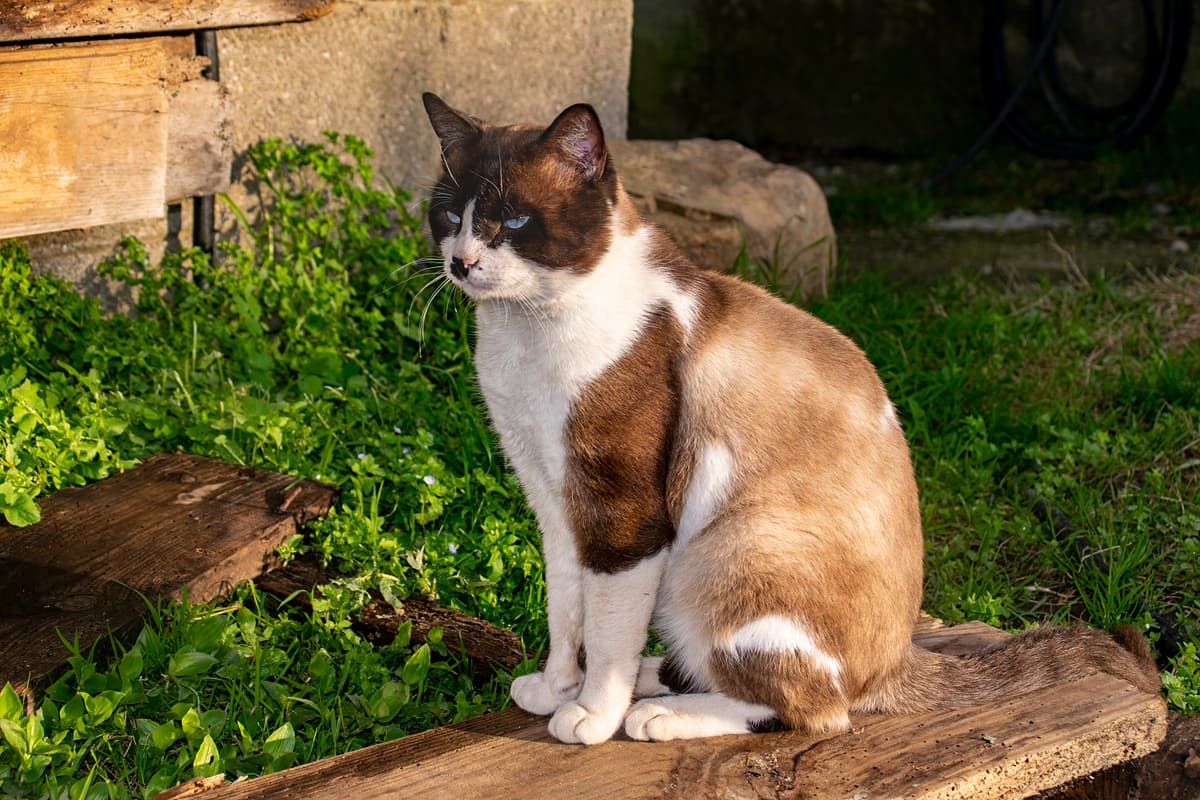Snowshoe vs Norwegian Forest Cat
Discover the differences between Snowshoe and Norwegian Forest Cat to make the best choice for your situation.
Try different breeds

Snowshoe
Affectionate and playful, this breed charms with striking blue eyes and unique markings. Gentle and social, makes an excellent choice for families and multi-pet homes.

Norwegian Forest Cat
Majestic and affectionate, this sturdy cat charms with a thick, water-resistant coat and a gentle, playful spirit. Adaptable and loyal, it thrives in active households and quiet homes alike.
Quick comparison
Medium
3.5–5.5 kg
Shorthaired, silky
12–15 years
2.5–4.5 kg
Moderately active
Large
5–9 kg
Longhaired, water-repellent
12–16 years
3.5–7 kg
Moderately active
Personality & behavior
Compare the personality traits and behavioral characteristics of both breeds.
Snowshoe
Affectionate, enjoys human company and attention
Quick learner, responds well to training
Active, enjoys interactive play sessions
Loves games and playful interaction daily
Adjusts fairly well to new environments
Norwegian Forest Cat
Enjoys human company, gentle with children
Learns routines and new environments quickly
Moderate activity, enjoys climbing and exploring
Likes interactive games and toys
Adjusts well to home changes and new people
Care needs
Exercise, grooming, and daily care requirements
Snowshoe
Hypertrophic cardiomyopathy, dental issues
Norwegian Forest Cat
Glycogen storage disease IV, hypertrophic cardiomyopathy
Suitability
How well each breed fits different living situations and families
Snowshoe
Good option
Affectionate and sociable, they adapt well to first-time owners seeking companionship.
Very suitable
Their moderate energy and adaptability suit apartment environments with regular interaction.
Enjoys activity
Playful personality fits households with active members seeking an engaging cat.
Child friendly
Gentle and tolerant, Snowshoes usually do well with respectful children.
Gets along well
Generally sociable with other pets when properly introduced and socialized.
Not ideal
They dislike being alone for long periods and may become stressed or lonely.
Norwegian Forest Cat
Good option
Gentle and adaptable, but benefits from owners willing to learn grooming needs
Works with effort
Can adapt to apartments if provided climbing spaces and stimulation
Highly suitable
Enjoys play and activity, fitting well in energetic homes
Very friendly
Patient and gentle, generally tolerant of respectful children
Good companion
Gets along with other pets if introduced properly and given space
Not ideal
Dislikes long periods alone and may develop stress or boredom
Breed strengths
What each breed excels at and their best qualities
Snowshoe
- Affectionate with family members
- Intelligent and easy to train
- Social with other pets
- Playful and energetic nature
- Distinctive and attractive appearance
Norwegian Forest Cat
- Adaptable to various living environments
- Affectionate without being overly demanding
- Strong climbers with agile movement
- Thick double coat protects in cold climates
- Generally healthy with few genetic issues
Challenges & considerations
Potential challenges and considerations for each breed
Snowshoe
- Prone to separation anxiety
- Sensitive to changes in environment
- Needs regular interactive play
- Can be vocal and demanding
- Coat pattern requires careful breeding
Norwegian Forest Cat
- Requires regular grooming to prevent mats
- Prone to obesity if under-exercised
- Can be shy with strangers initially
- High prey drive may affect small pets
- Needs mental stimulation to prevent boredom
Ready to choose your perfect breed?
Learn more about each breed or compare other breeds to find the perfect match for your lifestyle.
Discover more helpful tools
Make use of our other free tools to get the most out of your pet experience
